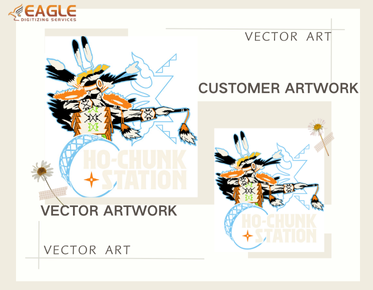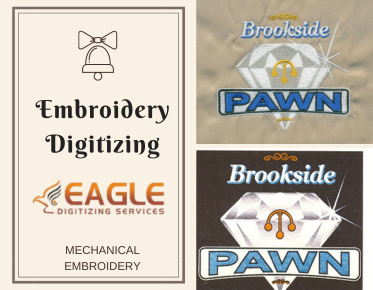Ink, Texture, and Technique: Printing Press vs. Screen Printing Explained
The Role of the Printing Press vs. Screen Printing
The printing press is an essential tool in many traditional printmaking techniques, providing the mechanical force needed to transfer ink from the matrix to the paper. Methods like etching, lithography, and woodcut rely heavily on the precision and consistency offered by the press to achieve intricate designs and uniform impressions. This mechanical process not only ensures high-quality results but also allows artists to create multiple editions of their work efficiently. On the other hand, serigraphy, or screenprinting, bypasses the need for a press entirely. Instead, it employs a fine mesh screen and a squeegee to push ink onto the substrate, offering unparalleled flexibility in texture and color application. The tactile, layered finish of serigraphy lends a distinct character to the artwork, making it highly valued in contemporary art circles.
Texture and Surface: How They Differ
The
surface of a traditional print is determined by the specific technique and
materials used. For example, woodcuts may leave a slightly raised texture from
the carved blocks, while lithographs tend to have a smooth, even finish due to
the chemical processes involved. The interplay between the matrix, ink, and
pressure creates subtle differences that collectors and connoisseurs deeply
appreciate. In contrast, serigraphs often exhibit a pronounced tactile quality
due to the thick layers of ink applied during the screen printing process. Each
layer contributes to a rich, multidimensional surface that feels both dynamic
and engaging. This textural variation is a defining feature of serigraphy,
often influencing an artist’s or collector’s choice between the two techniques.
Beyond aesthetics, these surface characteristics can also affect the way light
interacts with the artwork, enhancing its visual appeal in different settings.
Edition Sizes and Their Impact on Value
Limited
edition prints are cherished for their exclusivity, with each piece numbered
and often signed by the artist to signify authenticity. The smaller the
edition, the more desirable and valuable each print becomes, as scarcity drives
demand among collectors. In the realm of serigraphy, edition sizes are also a
significant factor, but the labor-intensive nature of the process adds another
layer of complexity. Creating a serigraph often involves the preparation of
multiple screens, each corresponding to a specific color or design element,
making smaller editions even more exclusive. This meticulous attention to
detail enhances the rarity and perceived value of serigraphs. Additionally, both
prints and serigraphs are often accompanied by documentation or certificates of
authenticity, further solidifying their place in the art market and ensuring
their status as collectible items.
Quality and Durability: Which One Lasts Longer?
The
longevity of traditional prints largely depends on the quality of materials and
the care taken in their preservation. Acid-free paper and archival inks can
significantly extend a print’s lifespan, ensuring its colors and details remain
vibrant for decades. However, prints are still susceptible to environmental
factors such as sunlight, humidity, and physical damage, necessitating careful
handling and display. Serigraphs, on the other hand, are often lauded for their
durability. The thicker, more resilient inks used in screen
printing provide a higher resistance to fading and wear over time. This
makes serigraphs particularly appealing for collectors who value longevity in
their investments. Proper framing with UV-protective glass and careful
placement away from direct light or moisture can further enhance the lifespan
of both prints and serigraphs, ensuring their beauty endures for generations.
Aesthetic Appeal: How Prints and Serigraphs Compare
Traditional prints offer a wide range of visual textures, from the bold, rustic lines of woodcuts to the refined, intricate details of etchings. Each method carries its aesthetic charm, reflecting the artist’s skill and intent. Lithographs, for example, often achieve a level of smoothness and tonal variation reminiscent of fine pencil or charcoal drawings, making them particularly versatile. Serigraphs, by contrast, are celebrated for their vibrant, saturated colors and sharp, clean lines. The screen printing process allows for precise color layering, creating striking, eye-catching designs that stand out in modern interiors. The slightly raised ink on a serigraph adds a tactile dimension, enhancing its visual depth. Choosing between these two art forms often boils down to personal preference and the specific mood or atmosphere one wishes to evoke in a space.
Choosing the Right Artwork for Your Space: Print or Serigraph?
When
selecting between a traditional print and a serigraph,
the decision often hinges on the aesthetic and emotional impact you want the
artwork to have in your space. Traditional prints, with their varying techniques
and textures, evoke a sense of history and craftsmanship. They can seamlessly
complement a classic or understated décor, adding depth and character to a
room. Serigraphs, on the other hand, are ideal for those seeking bold and
modern statements. Their vibrant colors and precise lines can energize a
contemporary setting, becoming the focal point of the space. Practical
considerations, such as the size of the artwork and its framing, should also be
factored in, ensuring that the piece harmonizes with the overall design of your
home or collection. Ultimately, the choice reflects your style and the
atmosphere you wish to create.
Understanding
the Value of Prints and Serigraphs
The
value of prints and serigraphs is shaped by several key factors, including
rarity, the artist's reputation, and the complexity of the production process.
Limited edition prints, especially those from renowned artists, can become
highly coveted collectibles. The rarity of these pieces often drives up their
price, as collectors compete for the opportunity to own a piece of history.
Serigraphs, however, tend to command higher prices due to the labor-intensive
nature of the screen printing process. Each color requires a separate screen
and meticulous alignment, showcasing the artist’s skill and dedication.
Additionally, the vibrant, lasting quality of serigraphs adds to their appeal,
making them a worthwhile investment for those who prioritize both aesthetic and
financial value. The inclusion of artist signatures and certificates of
authenticity further enhances the desirability and marketability of these
artworks.
How
to Identify a Print vs. a Serigraph
Recognizing
the differences between a traditional print and a serigraph can be crucial for
collectors and enthusiasts. Traditional prints often bear subtle signs of their
creation, such as the marks left by carving tools in woodcuts or the fine lines
of etched designs. The texture is generally smooth, with a flatter ink application
that adheres closely to the paper’s surface. Serigraphs, by contrast, stand out
with their bold, solid colors and slightly raised ink texture, which can often
be felt by running a finger lightly over the surface. The precision of the screen printing process ensures crisp, clean edges and
vibrant hues that are unmistakable. Additionally, the back of a serigraph may
sometimes show traces of ink seepage through the mesh screen, a telltale sign
of its production method. Understanding these characteristics ensures informed
purchases and appreciation of each technique’s unique artistry.
The Market for Prints and Serigraphs
The
art market offers numerous avenues for acquiring prints and serigraphs,
catering to a wide range of budgets and tastes. Galleries and art fairs are
excellent places to discover works by established and emerging artists, often
accompanied by expert guidance on their provenance and value. Online platforms,
such as Saatchi Art, Etsy, and Artsy, provide a convenient way to explore a
diverse selection of prints and serigraphs from the comfort of your home.
Auction houses like Sotheby’s and Christie’s cater to high-end collectors
seeking rare or historically significant pieces, often with detailed
documentation and authentication. For first-time buyers, researching the market
and comparing prices across multiple sources can help ensure a fair purchase.
Additionally, seeking pieces directly from artists’ websites or studios not
only supports their craft but also provides a more personal connection to the
artwork.
Common
Misconceptions About Prints and Serigraphs
Despite their popularity, prints and serigraphs are often
misunderstood, leading to common misconceptions among buyers and collectors.
One frequent myth is that limited edition pieces are always valuable. While
rarity can enhance a piece’s value, factors such as the artist’s reputation,
craftsmanship, and market demand play equally significant roles. Another
misconception is the confusion between giclée prints and serigraphs. Giclée
prints are high-quality digital reproductions
made using inkjet printers, offering remarkable detail but lacking the tactile depth
of serigraphy. Furthermore, not all prints or serigraphs are merely
reproductions; many are original artworks created as standalone pieces.
Understanding these distinctions can help collectors make more informed
decisions and appreciate the unique qualities of each art form.
The
Cultural Significance of Prints and Serigraphs
Throughout
history, prints and serigraphs have served as important cultural artifacts,
reflecting the artistic, social, and political landscapes of their times.
Traditional printmaking has deep roots in art history, with techniques like
woodcut and etching used to disseminate religious, political, and educational
themes. From the intricate engravings of the Renaissance to the satirical
etchings of the Enlightenment, prints have played a pivotal role in shaping
public discourse. Serigraphy, meanwhile, emerged as a powerful medium in the
20th century, embraced by pop artists like Andy Warhol and Roy Lichtenstein for
its ability to produce bold, graphic images. These artworks captured the spirit
of their era, addressing themes of consumerism, identity, and cultural change.
Together, prints and serigraphs continue to provide valuable insights into the
societies and movements that inspired them.
How to Care for Your Prints and Serigraphs
Proper
care is essential for preserving the beauty and longevity of prints and
serigraphs. Traditional prints should be stored
in cool, dry environments away from direct sunlight to prevent fading and
discoloration. Acid-free materials, such as archival sleeves and mats, can help
protect them from deterioration over time. For serigraphs, the use of
UV-protective glass and museum-quality framing materials can safeguard the
vibrant colors and raised textures from environmental damage. It’s also
important to handle both types of artwork with clean hands or gloves to avoid
transferring oils or dirt to the surface. Periodic inspections and professional
cleaning, if necessary, can further ensure that your collection remains in
pristine condition for years to come.
Which
One Is Right for You?
Choosing
between a print and a serigraph ultimately depends on your personal
preferences, budget, and the role the artwork will play in your space or
collection. Prints offer a rich tapestry of textures and historical
significance, making them ideal for those who appreciate traditional
craftsmanship. Serigraphs, with their bold colors and modern appeal, are
perfect for making a statement and adding vibrancy to contemporary interiors. Whether
you prioritize the tactile depth of a serigraph or the intricate details of a
print, both forms offer unique opportunities to connect with the artist’s
vision and enrich your art collection. Whichever you choose, understanding the
nuances of each technique will deepen your appreciation and enhance the joy of
owning these remarkable works of art.



